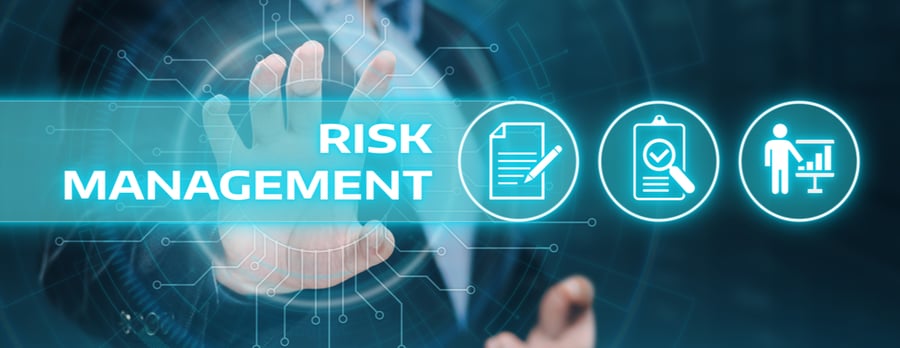6 min read
How to prevent cyber attacks and security breaches
By:
dcoatney
on
October 5, 2018
Updated: September 20, 2021

As cyber criminals launch increasingly sophisticated attacks every year, cyber security teams can struggle to keep up with new threats. Businesses and organizations need to constantly adjust and update their security policies — if they don’t adapt and scale security measures fast enough, their reputation and profits will eventually pay the price.
But, there are some foundational security principles you can apply to stop hackers from gaining access to your systems. Learn how to prevent cyber attacks by protecting common vulnerabilities and minimizing your risk of exposure. We’ll explain:
-
What you need to know about cyber attacks.
-
Risk management best practices
-
Common types of cyber attacks to prevent
-
How your organization can develop a long-term strategy to protect against ever-changing security threats.
What you should know about cyber attacks
Cyber attacks can take various forms, but what they all have in common is that malicious actors breach another person or organization’s information systems, usually to gain some kind of advantage. According to research by Verizon, 86% of global data breaches that occurred in 2020 were financially motivated.
Often, cyber attacks only succeed because criminals were able to identify and exploit security vulnerabilities to gain unauthorized access to system controls, protected databases, and network configurations. Protecting against cyber attacks is an essential component of your organization’s security strategy. Cyber security usually brings to mind implementing password management, multi-factor authentication, and complex network security solutions.
But preventing cyber attacks requires a much more holistic approach. Any connected device, including printer and scanning systems, needs to be addressed in your information security practices.

Cyber criminals can use simple vulnerabilities from the most innocuous sources — an unsecured internet connection via your local printer or a friendly-looking email or social media post. You need to identify weaknesses across your security processes and get a better understanding of what you’re up against. Let’s get started with some trends and data.
How cyber crime affects organizations
Global cyber crime is estimated to cost businesses over $6 trillion in damages as of 2021. As the digital “bad guys” get smarter, they’re more capable of taking your company’s most valuable resources, leaving you scrambling to recover — and your operations, profit, and budget will suffer.
According to IBM’s research into data breaches, from 2015 to 2020, enterprise IT teams, on average, took over 200 days to detect that a data breach had occurred and another 70 days before containing those breaches.
Each additional hour it takes your IT team to scan operating systems and cloud storage for vulnerabilities, to secure your Wi-Fi network, and remove malicious code from your systems costs you time, money, and customer trust. That’s why it’s essential that you plan how to prevent cyber attacks and remediate security issues long before they occur.
Risk management strategies to protect against cyber attacks
When developing a long-term cyber security strategy, companies have to prioritize risk management, eliminating unnecessary vulnerabilities in their systems and software.
Common cybersecurity vulnerabilities include:
-
Legacy business applications that are difficult to integrate and manage in compliance with modern security standards, creating configuration issues that hackers can exploit to gain access to your systems.
-
Security policy gaps and protocols between different teams, especially in how sensitive data is managed and shared.
-
Poor access control when managing which users are authorized to access what data sources.
-
Network segmentation issues, which means protected systems and databases are not isolated from the rest of the network. Then, if hackers gain access to one system, they gain access to them all.
Risk management leaders need to regularly audit and assess their systems for these kinds of issues and develop strategies to mitigate or eliminate these vulnerabilities.
Common cyber attacks and how to prevent them
Another way to incorporate risk management is to learn about common cyber attacks and how to prevent them. Leaders should focus in particular on common threats specific to their industry, region, or business. Common cyber attacks include:
-
Malicious code or malware and phishing attacks that infect your systems with harmful code that grants unauthorized access to your data. In 2020, two-thirds of businesses were impacted by phishing scams, including the most common type: spear-phishing attacks. This can also include man-in-the-middle (MITM) attacks through your browser or router.
-
Social engineering, in which hackers use social skills and confidence tactics to gather information from your employees to find ways into your systems and compromise your data.
-
Brute force attacks–using software to try all possible password combinations to gain access to protected systems.
-
Denial of service (DDoS) attacks, in which network resources are taken up by multiple requests from a malicious actor so legitimate users can’t access their systems, costing businesses time and money while their devices, data, and applications aren’t accessible.
SQL injections (SQLI), which input malicious SQL code into backend databases so protected information is displayed without a password.
Develop a long-term, holistic strategy on how to prevent cyber attacks
Even if some cyber attacks are more common than others, remember that cyber criminals are always changing their methods. If you don’t develop a flexible approach to managing cyber security threats, you’ll subject your systems and data to avoidable risk.
Accenture reports that 68% of business leaders consider there to be an increased risk of cyber attacks.
.png?width=757&name=Copy%20of%20SIAA%20%20%20-%20Highlighted%20Text%20Template%20(1).png)
Instead of scrambling after each new type of security threat, your team can focus on developing a holistic strategy that incorporates layers of security into your IT strategy. Then your team will have a plan in place to prevent and remediate common security threats and adapt to emerging cyber security threats as they emerge.
Emerging cybersecurity threats
No IT security strategy or team can be 100% prepared for how hackers and cyber criminals try to gain access to their systems in the future. Here are a few emerging cyber security threats that experts are still researching and determining how to best address:
-
Deepfakes
-
Synthetic identities
-
Artificial intelligence (AI) powered cyber attacks
-
Vehicle cyber attacks
-
Cloud jacking
The best thing you and your team can do is focus on creating redundant, overlapping layers of security supported with automated IT service delivery. Restrict access to sensitive information and always use multi-factor authentication and automated security protocols.
And you can set up security solutions for cloud storage and backup services. If a breach occurs, your protected data can automatically fail over to secure servers and prevent malicious actors from gaining access to sensitive information, systems, and business networks.
Let Standley Systems support your cyber attack prevention strategies
Risk management is a complex, never-ending job, but you don’t have to handle it alone. Standley Systems is ready to help you prevent cyber attacks. We work with organizations in healthcare, finance, government, education, and other industries to adopt fundamental cyber security practices for their needs.
Learn how we can help secure your connected systems, whether that includes internet-enabled office equipment, business phone systems, cloud storage and backup services, or document management systems. Contact us today to get an assessment of your business’s cyber security and find out how we can keep you more secure.











